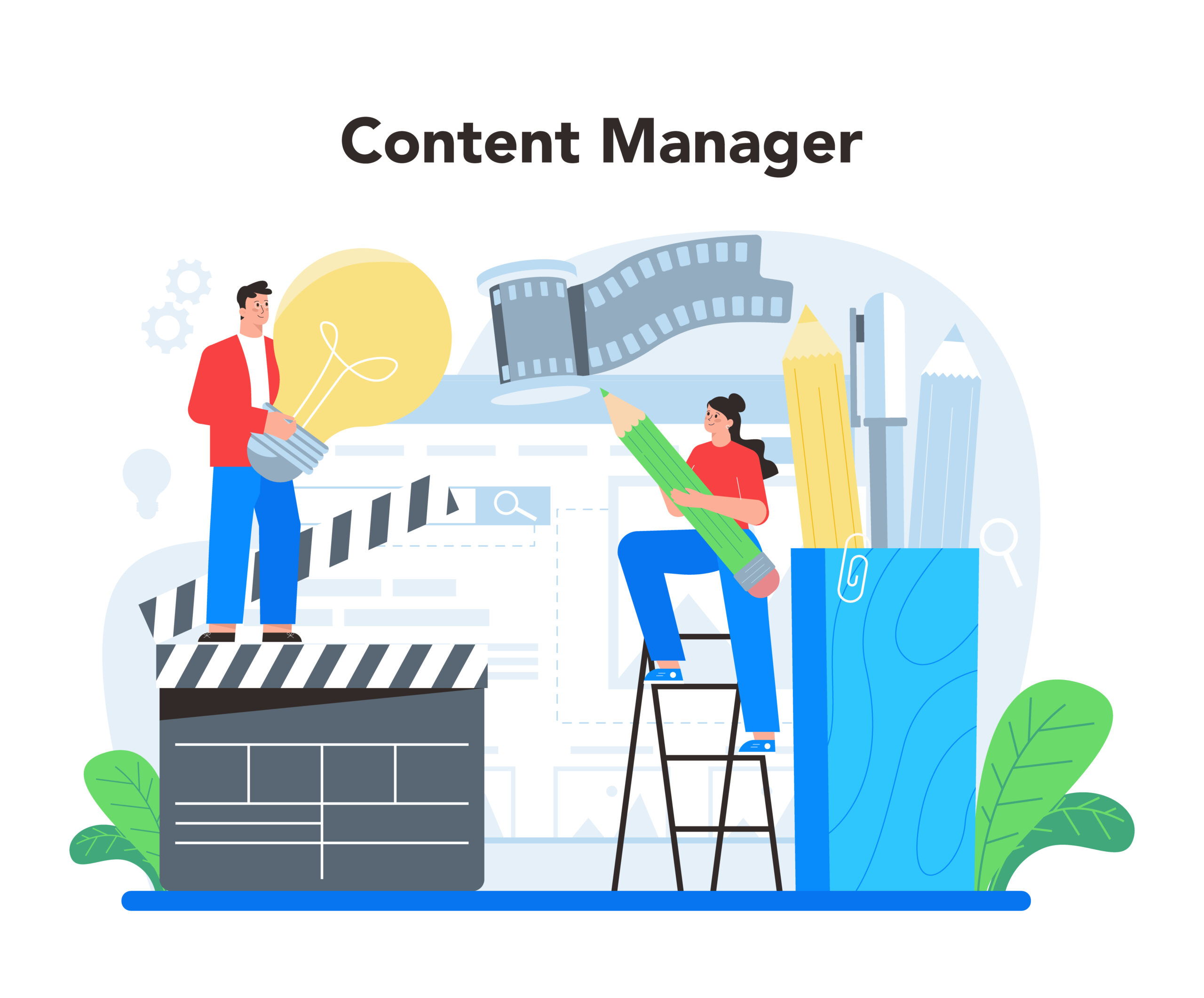Tech
Hire Best iOS App Developers in India: Tips and Recommendations

India has emerged as a hub for mobile app development, with a large pool of talented developers available at competitive rates. The demand for iOS app developers in India has been on the rise, as businesses seek to leverage the popularity of Apple’s devices and operating system. However, finding the right developer for your project can be a daunting task, especially if you are not familiar with the Indian market.
To help businesses navigate this process, this article will provide an overview of how to hire best iOS app developers in India. It will cover the key factors to consider when selecting a developer or development company, such as experience, expertise, portfolio, communication skills, and pricing. Additionally, it will offer tips on how to evaluate candidates and negotiate contracts, as well as pitfalls to avoid. By following these guidelines, businesses can increase their chances of finding a reliable and skilled iOS app developer in India and achieving their mobile app goals.
Identifying Top iOS App Developers in India
When it comes to hiring the best iOS app developers in India, it is important to identify those who possess the necessary technical expertise, have a strong portfolio of past work, and specialize in the industry relevant to your project.
Evaluating Technical Expertise
Technical expertise is a crucial factor to consider when identifying top iOS app developers in India. One way to evaluate technical expertise is to review their educational background, certifications, and experience in developing iOS apps. A developer with a degree in computer science or a related field, along with relevant certifications, can demonstrate a strong foundation in iOS app development. Additionally, experience in developing iOS apps for different industries and using various programming languages and tools can further demonstrate technical expertise.
Assessing Portfolio and Past Work
Assessing the portfolio and past work of an iOS app developer can provide valuable insights into their capabilities and quality of work. A strong portfolio should showcase a variety of iOS apps developed for different industries and demonstrate a range of functionalities and features. It is also important to review the user interface and user experience of the apps to ensure they are intuitive and user-friendly. Additionally, checking references and reviews from past clients can provide further assurance of the quality of work.
Understanding Industry Specialization
Industry specialization is another important factor to consider when identifying top iOS app developers in India. Developers who have experience in developing iOS apps for your specific industry can bring valuable insights and knowledge to the project. For example, a developer with experience in developing healthcare-related apps can understand the unique regulatory requirements and user needs of the healthcare industry. This can lead to a more efficient and effective development process and a higher quality end product.
In conclusion, identifying top iOS app developers in India requires evaluating technical expertise, assessing portfolio and past work, and understanding industry specialization. By considering these factors, businesses can hire the best developers for their iOS app development needs.
Engagement Models and Hiring Processes
Freelance vs. Agency Developers
When it comes to hiring iOS app developers in India, businesses have two primary options: freelance developers or agency developers. Freelance developers are independent contractors who work on a project-by-project basis. They are typically less expensive than agency developers, but they may lack the resources and support that come with working for an agency.
Agency developers, on the other hand, work for a company that specializes in app development. They offer a team of developers, designers, and project managers who can work together to create a high-quality app. While agency developers may be more expensive than freelancers, they often provide a higher level of expertise and support.
Contract Terms and Agreements
Before hiring an iOS app developer, businesses should establish clear contract terms and agreements. This includes outlining the scope of the project, the timeline for completion, and the payment structure. It is also important to establish ownership and intellectual property rights for the app.
Businesses should also consider including provisions for ongoing support and maintenance in their contracts. This can help ensure that the app remains up-to-date and functional after it is launched.
Ongoing Support and Maintenance
After an app is launched, it is important to provide ongoing support and maintenance to ensure that it continues to function properly. This can include bug fixes, updates, and improvements to the app’s functionality.
Businesses can choose to provide this support in-house or outsource it to a third-party provider. Outsourcing can be a cost-effective option, as it allows businesses to focus on their core competencies while leaving app maintenance to the experts.
Tech
Multimedia Content Providers: The Top Companies in the Industry

Multimedia content providers are companies that specialize in creating and distributing multimedia content such as videos, images, and audio. They are responsible for producing and delivering high-quality content that can be used for various purposes, including entertainment, education, and marketing. With the increasing demand for online content, multimedia content providers have become an essential part of the digital landscape.
Multimedia content providers offer a wide range of services, including video production, photography, graphic design, and audio recording. They work with clients to create engaging and informative content that can be used to promote products and services, educate audiences, or simply entertain. These providers use the latest technology and equipment to produce high-quality content that meets the needs of their clients.
The rise of social media and online platforms has made multimedia content providers more important than ever. With millions of people consuming content online every day, businesses and individuals need to create compelling and engaging content to stand out from the crowd. Multimedia content providers play a crucial role in helping their clients achieve this goal, providing them with the tools and expertise they need to create content that resonates with their audiences.
Overview of Multimedia Content Providers
Evolution of Content Delivery
Multimedia content providers have evolved significantly over the years. In the past, content delivery was limited to traditional media such as television, radio, and newspapers. However, with the advent of the internet, multimedia content providers have been able to reach a wider audience through digital platforms.
Types of Multimedia Content
Multimedia content providers offer a variety of content types to their audience. These include, but are not limited to, videos, images, audio, and text. Videos are currently the most popular type of multimedia content, with platforms like YouTube and Netflix dominating the market. Images and audio are also popular, with platforms like Instagram and Spotify being used by millions of people worldwide.
Major Multimedia Platforms
There are several major multimedia platforms that dominate the market. These include YouTube, Netflix, Instagram, Spotify, and Facebook. Each of these platforms offers unique features and content types, catering to different audiences. YouTube, for example, is known for its user-generated content and tutorial videos, while Netflix offers a wide range of movies and TV shows.
Overall, multimedia content providers have revolutionized the way content is delivered and consumed. With the increasing popularity of digital platforms, it is expected that multimedia content providers will continue to grow and evolve in the coming years.
Technical Aspects and Challenges
Content Management Systems
Multimedia content providers rely heavily on content management systems (CMS) to manage their content. A CMS is a software application that allows content creators to manage digital content from a single interface. The CMS enables multimedia content providers to upload, store, and distribute content to various platforms. However, CMSs come with their own set of challenges, such as security vulnerabilities, scalability, and compatibility issues.
Digital Rights Management
Digital rights management (DRM) is a critical aspect of multimedia content providers. DRM is a technology that protects the copyright of digital content. It ensures that only authorized users can access and use the content. However, implementing DRM can be challenging, as it requires a balance between protecting the content and providing a seamless user experience.
Monetization Models
Monetizing multimedia content is a crucial aspect of multimedia content providers. There are various monetization models available, such as subscription-based, pay-per-view, and advertising-based models. However, choosing the right monetization model can be challenging, as it depends on the type of content, target audience, and market trends.
User Experience and Accessibility
User experience and accessibility are essential aspects of multimedia content providers. The user experience plays a vital role in retaining users and increasing engagement. Accessibility ensures that the content is available to users with disabilities. However, providing a seamless user experience and accessibility can be challenging, as it requires a balance between design and functionality.
In conclusion, multimedia content providers face several technical challenges, such as managing content, implementing DRM, choosing the right monetization model, and providing a seamless user experience and accessibility. However, with the right tools and strategies, these challenges can be overcome, and multimedia content providers can provide high-quality content to their users.
Tech
Social media marketing services: Boost Your Website’s Performance

A conversion rate optimization agency is a company that specializes in improving the percentage of website visitors who take a desired action, such as making a purchase or filling out a form. These agencies use various techniques, such as A/B testing and website redesign, to increase the likelihood of a conversion.
One of the primary goals of a Social media marketing services is to help businesses increase their revenue by improving their website’s conversion rate. By making small tweaks to a website’s design and content, these agencies can help businesses see significant increases in their conversion rates, ultimately resulting in more sales and revenue.
Many businesses turn to conversion rate optimization agencies when they are struggling to convert website visitors into customers. These agencies have the expertise and experience to identify areas of a website that may be hindering conversions and can develop a customized plan to address these issues. With the help of a conversion rate optimization agency, businesses can improve their online presence and increase their bottom line.
Essentials of Conversion Rate Optimization
Understanding Conversion Metrics
Before optimizing conversion rates, it’s necessary to understand the relevant metrics. These include the conversion rate itself, bounce rate, exit rate, and time on site. Conversion rate is the percentage of visitors who complete a desired action, such as making a purchase or filling out a form. Bounce rate is the percentage of visitors who leave the site after viewing only one page. Exit rate is the percentage of visitors who leave the site from a specific page. Time on site measures the amount of time visitors spend on the site. Understanding these metrics is crucial to identifying areas for improvement.
Landing Page Optimization
The landing page is where visitors arrive after clicking on an ad or search result. Optimizing the landing page is key to improving conversion rates. This includes having a clear and concise value proposition, a compelling call to action, and a simple and user-friendly design. It’s also important to eliminate distractions and minimize page load times.
A/B and Multivariate Testing
A/B and multivariate testing are methods for testing variations of a web page to see which performs better. A/B testing involves testing two versions of a page to see which performs better, while multivariate testing involves testing multiple variations of different elements on a page. These tests can help identify which elements are contributing to poor conversion rates and which can be improved.
User Experience and Usability
User experience and usability are critical to improving conversion rates. A site that is difficult to navigate or has a confusing layout will deter visitors from completing desired actions. It’s important to conduct user testing and gather feedback to identify areas for improvement. This includes ensuring that the site is mobile-friendly and accessible to users with disabilities.
Overall, understanding conversion metrics, optimizing landing pages, conducting A/B and multivariate testing, and improving user experience and usability are essential components of conversion rate optimization. By implementing these strategies, businesses can improve their conversion rates and ultimately increase revenue.
Selecting a Conversion Rate Optimization Agency
When it comes to selecting a conversion rate optimization agency, there are several factors that need to be considered. Here are some key points to keep in mind:
Identifying Expertise and Experience
One of the most important factors to consider when selecting a conversion rate optimization agency is their level of expertise and experience. Look for agencies that have a proven track record of success and have experience working with businesses in your industry. It’s also important to consider the agency’s team members and their areas of expertise. Do they have specialists in areas such as user experience, design, and development?
Assessing Strategies and Tools
Conversion rate optimization agencies use a variety of strategies and tools to improve website performance. It’s important to understand the agency’s approach and the tools they use to optimize conversion rates. Look for agencies that use a data-driven approach and have experience with A/B testing, heat mapping, and other optimization techniques.
Evaluating Success Stories and Case Studies
When selecting a conversion rate optimization agency, it’s important to evaluate their success stories and case studies. Look for agencies that have worked with businesses similar to yours and have achieved significant improvements in conversion rates. It’s also important to understand the agency’s process and how they measure success.
Understanding Pricing Models
Finally, it’s important to understand the agency’s pricing model and how they charge for their services. Some agencies charge a flat fee, while others charge based on the results they achieve. It’s important to consider your budget and the agency’s pricing model when selecting a conversion rate optimization agency.
In summary, selecting a conversion rate optimization agency requires careful consideration of several factors, including expertise and experience, strategies and tools, success stories and case studies, and pricing models. By taking the time to evaluate these factors, businesses can select an agency that is best suited to their needs and goals.
Tech
Distribution ERP Software: Streamline Your Business Operations

Distribution ERP software is a type of software that helps businesses manage and optimize their supply chain and distribution processes. It provides a centralized platform for businesses to manage inventory, track orders, and streamline distribution operations. The software is designed to automate and simplify complex supply chain processes, enabling businesses to reduce costs, improve efficiency, and enhance customer satisfaction.
Distribution ERP software is essential for businesses that rely on efficient and effective supply chain management to stay competitive in today’s fast-paced business environment. The software provides real-time visibility into inventory levels, order status, and shipping information, enabling businesses to make informed decisions and respond quickly to changing market conditions. With distribution ERP software, businesses can optimize their supply chain processes, reduce costs, and improve customer satisfaction by providing timely and accurate delivery of goods and services.
Core Features of Distribution ERP Software
Distribution ERP software is designed to help businesses manage their supply chain operations effectively. It provides a range of features that help businesses streamline their operations, improve efficiency, and reduce costs. In this section, we will discuss the core features of distribution ERP software.
Inventory Management
Inventory management is one of the most critical features of distribution ERP software. It enables businesses to track their inventory levels, monitor stock movements, and manage their warehouses efficiently. With inventory management, businesses can avoid stockouts, overstocking, and other inventory-related issues.
Distribution ERP software provides businesses with real-time inventory tracking, which helps them make informed decisions about inventory management. It also provides businesses with tools to optimize their inventory levels, improve demand forecasting, and reduce carrying costs.
Order Processing
Order processing is another essential feature of distribution ERP software. It enables businesses to manage their sales orders, purchase orders, and other order-related tasks efficiently. With order processing, businesses can automate their order management processes, reduce errors, and improve order fulfillment times.
Distribution ERP software provides businesses with tools to manage their orders from start to finish. It enables businesses to track orders, manage customer information, and process payments. It also provides businesses with real-time order tracking, which helps them make informed decisions about order management.
Supply Chain Optimization
Supply chain optimization is a critical feature of distribution ERP software. It enables businesses to optimize their supply chain operations, reduce costs, and improve efficiency. With supply chain optimization, businesses can improve their supplier relationships, reduce lead times, and improve product quality.
Distribution ERP software provides businesses with tools to manage their supply chain operations effectively. It enables businesses to track supplier performance, manage purchase orders, and monitor supplier lead times. It also provides businesses with real-time supply chain analytics, which helps them make informed decisions about supply chain optimization.
Financial Management
Financial management is another critical feature of distribution ERP software. It enables businesses to manage their finances effectively, reduce costs, and improve profitability. With financial management, businesses can automate their financial processes, reduce errors, and improve financial reporting.
Distribution ERP software provides businesses with tools to manage their finances effectively. It enables businesses to manage their accounts payable, accounts receivable, and general ledger. It also provides businesses with real-time financial reporting, which helps them make informed decisions about financial management.
Customer Relationship Management
Customer relationship management is a critical feature of distribution ERP software. It enables businesses to manage their customer relationships effectively, improve customer satisfaction, and increase sales. With customer relationship management, businesses can automate their customer management processes, reduce errors, and improve customer engagement.
Distribution ERP software provides businesses with tools to manage their customer relationships effectively. It enables businesses to manage customer information, track customer interactions, and automate customer communication. It also provides businesses with real-time customer analytics, which helps them make informed decisions about customer relationship management.
Implementation and Integration
System Deployment
Implementing a new distribution ERP software requires careful planning and execution. The first step is to deploy the software on the system. This can be done either on-premises or in the cloud. The deployment process involves installing the software, configuring the system, and setting up the necessary infrastructure. It is important to ensure that the system meets the minimum requirements for the software to function properly.
Data Migration
Migrating data from the old system to the new one is a critical step in the implementation process. This involves transferring data from the legacy system to the new ERP software. It is important to ensure that the data is accurate and complete. The data migration process can be time-consuming and complex, and it may require the assistance of a third-party vendor.
Third-Party Integration
Most distribution ERP software is designed to integrate with other third-party applications. This allows for seamless data transfer between different systems. The integration process involves configuring the software to communicate with other applications. It is important to ensure that the integration is seamless and does not cause any disruptions in the workflow.
Training and Support
Implementing a new distribution ERP software requires training employees to use the new system. This involves providing them with the necessary knowledge and skills to use the software effectively. It is important to provide ongoing support to ensure that employees can use the software to its full potential. This includes providing technical support and troubleshooting assistance when needed.
In conclusion, implementing a distribution ERP software requires careful planning and execution. The process involves deploying the software, migrating data, integrating with other applications, and providing training and support to employees. With the right approach, a distribution ERP software can help streamline operations and improve efficiency.
-

 Business6 months ago
Business6 months agoISO Payments: Understanding the International Organization for Standardization’s Payment Standards
-

 Tech6 months ago
Tech6 months agoNetwyman Blogs: The Ultimate Source for Tech News and Insights
-

 Tech6 months ago
Tech6 months agoExpotab.com Login: How to Access Your Account
-

 Health6 months ago
Health6 months agoWell Health Tips in Hindi: The Benefits of Organic Living
-

 Business6 months ago
Business6 months agoStrategic Consulting: Maximizing Business Potential
-

 Health6 months ago
Health6 months agoOCD Therapy Online: Effective Treatment for Obsessive-Compulsive Disorder
-

 Home & Garden6 months ago
Home & Garden6 months agoBest Lawn Care Mississauga: Top Companies for a Lush Lawn
-

 Blog6 months ago
Blog6 months agoAndre Hakkak Net Worth: A Look at the Wealth of the Entrepreneur


